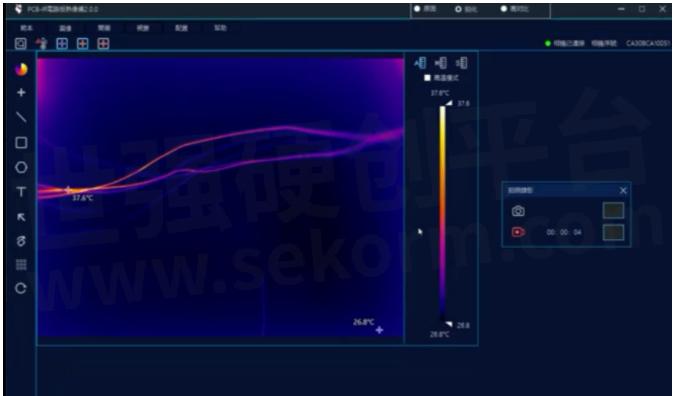What is the Advantages of Infrared Thermal Imaging Cameras Applied to Fiber Laser?

Infrared thermal imaging cameras are widely used, and the fiber optic industry is also closely related to infrared thermal imaging.

Fiber laser has the advantages of good beam quality, high energy density, high electro-optical conversion efficiency, good heat dissipation, compact structure, maintenance-free, flexible transmission, etc., and has become the mainstream direction of laser technology development and the main force of application. The overall electro-optic efficiency of a fiber laser is about 30% to 35%, and most of the energy is lost in the form of heat.
Therefore, temperature control during the working process of the laser directly determines the quality and service life of the laser. The traditional contact temperature measurement method will destroy the structure of the laser body, and the single-point non-contact temperature measurement method cannot accurately capture the fiber temperature. The use of infrared thermal imaging cameras to detect the temperature of optical fibers, especially the fusion joints of optical fibers, during the production process of optical fiber lasers can effectively guarantee the development and quality control of optical fiber products. During the production test, the temperature of the pump source, combiner, pigtail, etc. must be measured to ensure product quality.
Infrared thermal imaging temperature measurement on the application side can also be used for temperature measurement in laser welding, laser cladding, and other scenarios.
The unique advantages of infrared thermal imaging cameras applied to fiber laser detection:
1. Thermal imaging camera has the characteristics of long-distance, non-contact, and large-area temperature measurement.
2. Professional temperature measurement software, which can freely select the monitoring temperature area, automatically obtain and record the highest temperature point, and improve test efficiency.
3. The temperature threshold, fixed-point sampling, and multiple temperature measurements can be set to realize automatic data collection and curve generation.
4. Support various forms of over-temperature alarms, automatically judge abnormalities according to the set values, and automatically generate data reports.
5. Support secondary development and technical services, provide multi-platform SDK, and facilitate the integration and development of automation equipment.
In the manufacturing process of high-power fiber lasers, there may be optical discontinuities and defects of a certain size in the fiber fusion joints. Severe defects will cause abnormal heating of the fiber fusion joints, causing damage to the laser or burning hot spots. Therefore, temperature monitoring of fiber fusion splicing joints is an important link in the manufacturing process of fiber lasers. The temperature monitoring of the fiber splicing point can be realized by using the infrared thermal imager, so as to judge whether the quality of the measured fiber splicing point is qualified and improve the product quality.
The use of online thermal imaging cameras integrated into automation equipment can test the temperature of optical fibers stably and quickly so to improve production efficiency.
- +1 Like
- Add to Favorites
Recommend
- 65 Unique Uses of Infrared Thermal Imaging Cameras
- Thermal Grizzly CPU Contact Frame Intel 1700 LT is Now Available
- Thermal Grizzly Product Update: AM5 High-Performance Heatspreader with New Nickel Plating
- Why Infrared Thermal Imaging Equipment Is So Popular In The Thermal Industry?
- Important Note: Extension of Compatibility for AMD Products for the Ryzen 9000 Launch
- What’s the Difference between Infrared Thermometer and Thermal Camera?
- Basic Principles Of Infrared Thermal Imaging Technology
- Ryzen Direct Die Frames V2: How the DDF is made
This document is provided by Sekorm Platform for VIP exclusive service. The copyright is owned by Sekorm. Without authorization, any medias, websites or individual are not allowed to reprint. When authorizing the reprint, the link of www.sekorm.com must be indicated.






























































































































































































































































































































































































































































































































































































































































































































































































































































































